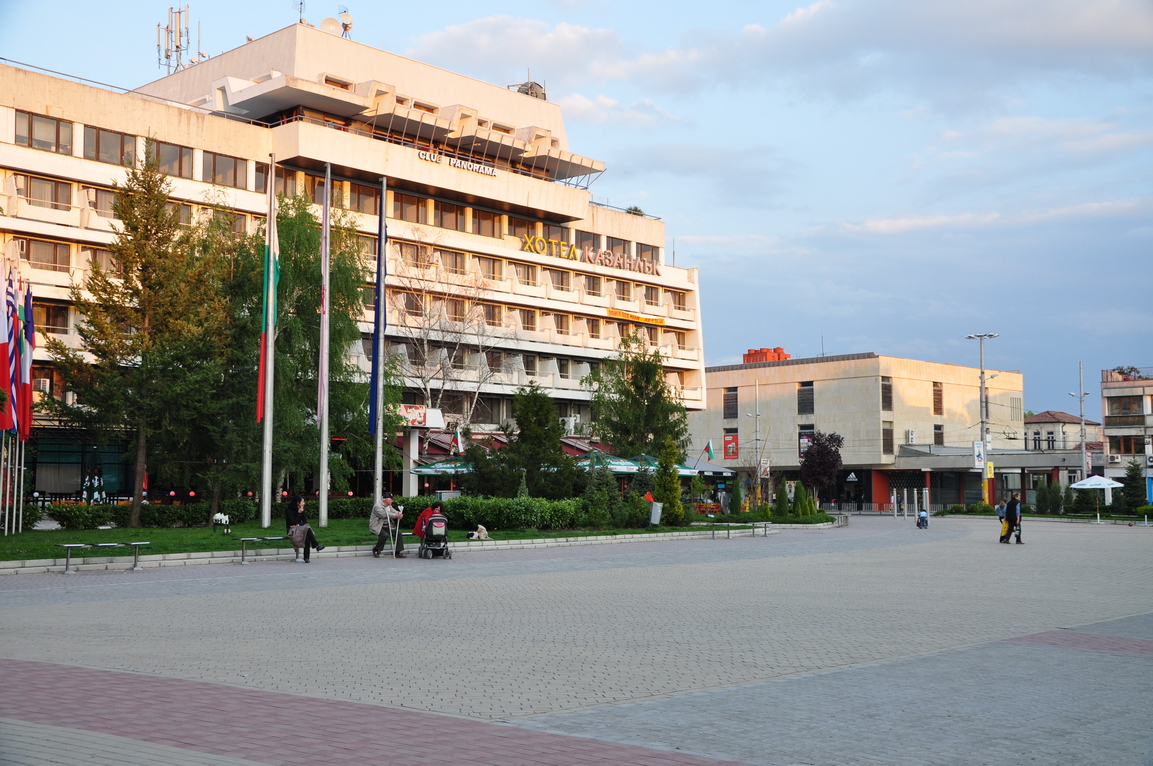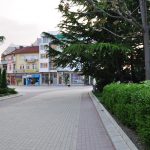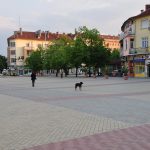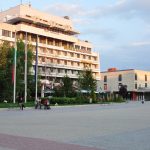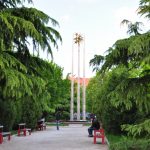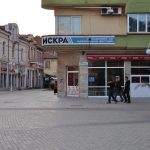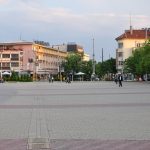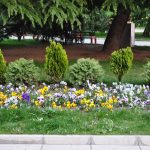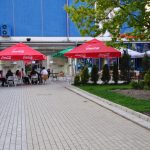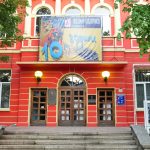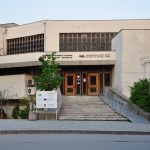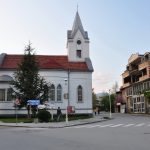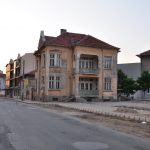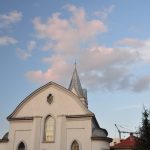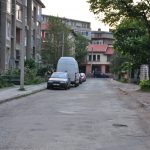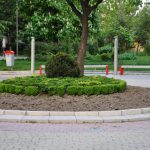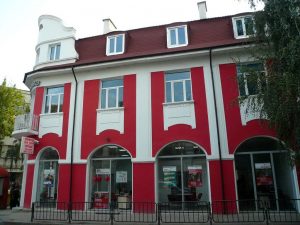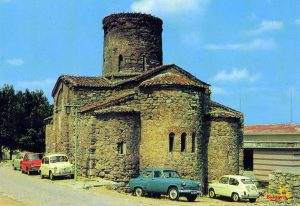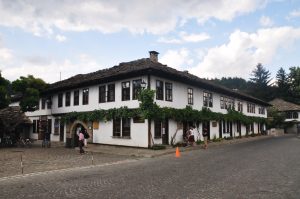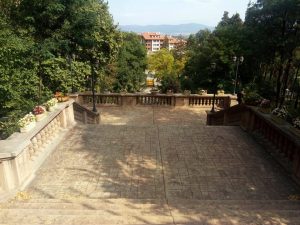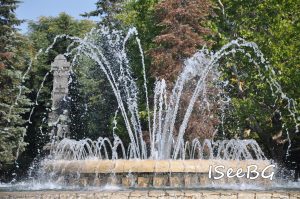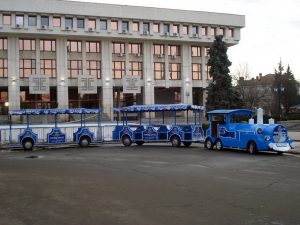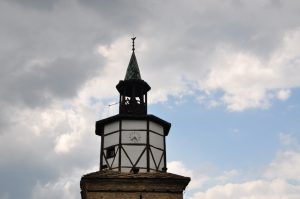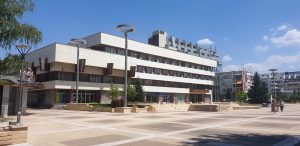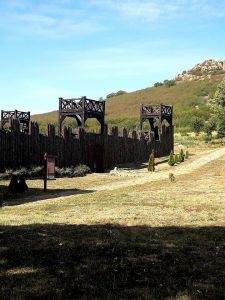Kazanlak (Bulgarian: Казанлъ̀к, Kazanlǎk, Thracian and Greek Σευθόπολις (Seuthopolis), Turkish: Kazanlık) is a Bulgarian town in Stara Zagora Province, located in the middle of the plain of the same name, at the foot of the Balkan mountain range, at the eastern end of the Rose Valley. It is the administrative centre of the homonymous Kazanlak Municipality.
The town is among the 15 biggest industrial centres in Bulgaria, with a population of 44,760 people as of Dec 2017.
It is the center of rose oil extraction in Bulgaria and the oil-producing rose of Kazanlak is one of the most widely recognizable national symbols.
Iskra Town History Museum
The Iskra Town History Museum is one of the first provincial town museums in Bulgaria. It was founded on 29 June 1901, by Peter Topuzov – a bright man of enterprise from Kazanlak and by decision of the leaders of Iskra Studious Club. More than 50 000 exhibits revealing the history of Kazanlak area from ancient times until nowadays have been kept at Iskra museum. The finds from Thracian town of Seuthopolis are displayed in three separate halls. Temporary exhibitions with valuable articles from this museum and loan-collections are arranged during the active tourist season.
Rose Museum
The museum is a part of the Historical Museum “Iskra” in Kazanlak. In 1967 a small exposition was created, which was dedicated to rose-picking in Kazanlak and the region. In 1969 the exposition grew into an independent museum. Nowadays the Rose Museum stores more than 15 000 exponents related to rose-picking and rose-production in Bulgaria. The museum exposition includes original pictures and documents of the development of rose production, instruments for processing of the rose gardens, vessels for storing and exporting rose oil and rose water. Restorations of a rose warehouse and the first laboratory for examination of rose oil created in 1912 are made in the museum. One of the biggest attractions in the museum is a rose oil vessel which had been used for the last time in 1947 to this day a strong rose scent can still be smelled around it.
Koulata Ethnographic Complex
The charming cobbled Mirska Street is in the oldest part of the city – Koulata District, near the world-famous Thracian Tomb of Kazanlak. This is where traditional architecture from the period of the Bulgarian National Revival (18th–19th centuries) can be found. The traditional buildings there constitute the Koulata Ethnographic Complex, restored and open to visitors since 1976. They “take us back” to the unique, diverse material culture of Bulgarians from the Kazanlak region of the past.
Before stepping through the gate, visitors can hear the coppersmiths’ hammers. They tell the stories of the typical local coppersmiths’ craft. Opposite are the violin-makers and next door is the goldsmith’s. The country house nestles among bushes and trees. It is one-storied and asymmetrical. It has the characteristic of the Balkan valley houses from the end of the 18th and the beginning of the 19th century.
The lifestyle of the late 19th and early 20th century inhabitants of the region is shown in the restored houses from the time of the Bulgarian Renaissance. The artefacts displayed here are kept in the Ethnography department. Kazanlak was a famous crafts town in the near past. Visitors can try some of the rose industry products – jam, liqueur, and gyulovitsa (rose brandy).
Buzludzha National Park
Buzludzha National Park rises east of the Shipka pass. It is a very important part of Bulgarian history – here, on 30 July 1868, Hadzhi Dimitar fell in battle. He was at the head of a small group of rebels fighting the numerous Turkish enemy. In 1961 a monument was built here to commemorate this act of heroism. The impressive marble figure of Hadji Dimiter is outlined against the green background of the pine-trees. Near it, under the venerable beeches, a stone bas relief commemorates another event in Bulgarian history – founding of the Bulgarian Workers’ Social Democratic Party on 2 August 1891, after a clandestine congress. Buzludzha with its numerous chalets, rest homes and hotels offers excellent opportunities for the lovers of winter sports and tourism.
Shipka National Park
Shipka National Park is founded on the same area where the bloody battles of the Russian-Turkish Liberation War occurred during the 1870s. It represents a complex of memorial tablets, monuments, trenches, and bunkers reminiscent of the battle.
On the top of the mount at Shipka rises the “Freedom Monument”. It was paid for by voluntary donations of the Bulgarian people and built after the design of Atanas Donkov, an architect, and Alexander Andreev, a sculptor. The monument was opened officially in 1934. The monument’s expositions relate the story of Russian soldiers’ and Bulgarian volunteers’ heroism during the five-month defence of the pass. From the last ground there is a panorama of the restored details of the battle field, monuments and common graves reminiscent of the self-sacrifice of the Russian and Bulgarian heroes.
The locality offers excellent conditions for relaxation and tourism. Several shops, cafes with well-stocked wet-bars, camping, a comfortable hotel-restaurant, and a petrol station.
The national Shipka-Buzludza park-museum includes Shipka Memorial Church (or Church of the Nativity) near the town of Shipka, Shipka National Park, Freedom Monument near the village of Sheinovo, and Buzludza National Park.
The Shipka Memorial Church
The Russian-style Shipka Memorial Church.
The Shipka Memorial Church is 12 km (7.5 mi) north of Kazanlak, at the south foot of the Stara Planina mountains near the town of Shipka. It was erected after Bulgarian independence as a monument to Russian and Bulgarian dead. The golden domes and the green and pink façade loom against the mountains and attract the attention of the travelers in the Shipka pass.
The project design following 17th century Russian church architecture with arks, friezes, pediments, and gold-plated ornaments, was the work of the Czech architect A.I. Tomisko. The main entrance has three arks, topped off with the distinctive 50-metre (160 ft) high spire of the bell tower. There are 17 bells; the heaviest of them weighs about 12 metric tons (12 long tons; 13 short tons). The lime-tree iconostasis is richly decorated with gilded wood-carvings and is of great artistic value.
The icons were presented by Russian monks from the monastery of St. Pantaleimon on Mount Athos, Greece. The names of the Russian regiments and of Russian and Bulgarian dead are inscribed on 34 marble plates built in the walls of the church. The honoured dust of the Russian soldiers killed at Shipka Pass (1877–78) have been kept in 17 stone sarcophagi in the crypt. The Shipka Memorial church was ceremoniously consecrated on 27 September 1902.
Thracian Tomb of Kazanlak
The tomb is part of a large Thracian necropolis. It comprises a narrow corridor and a round burial chamber, both decorated with murals representing a Thracian couple at a ritual funeral feast. The monument dates back to the 4th century BCE and has been on the UNESCO protected World Heritage Site list since 1979. The murals are memorable for the splendid horses and for a gesture of farewell, in which the seated couple grasp each other’s wrists in a moment of tenderness and equality (according to Lyudmila Zhivkova—a view that is not shared by all specialists). The paintings are Bulgaria’s best-preserved artistic masterpieces from the Hellenistic period.
The tomb is situated near the ancient Thracian capital of Seuthopolis in a region where more than a thousand tombs of kings and members of the Thracian aristocracy can be found.
The seated woman of the murals is depicted on the reverse of the Bulgarian 50 stotinki coin issued in 2005.
Reproduction of a portrait bust of Seuthes III from the Kosmatka tomb.
One of the most impressive monuments of the Thracian civilization in the Valley of the Thracian Kings, is the heroon (a temple-tomb of a hero of royal status) of Seuthes III. In the summer of 2004 a team of Bulgarian archaeologists unearthed a large, intact Thracian mausoleum dating back from the 5th century BCE near the Bulgarian town of Shipka, Kazanlak municipality. The temple was buried under the 20-metre (66 ft) high “Golyamata Kosmatka” mound. “This is probably the richest tomb of a Thracian king ever discovered in Bulgaria. Its style and its making are entirely new to us as experts,” said Georgi Kitov, the head of the team.
The Kosmatka Tomb represents a remarkable Thracian heroon built accordingly to the Orphic traditions of the end of the 5th or beginning of the 4th century BCE. Serving also as a symbolic tomb of Seuthes III, it contained an enormous treasure, exhibited now in the Iskra Museum and Art Gallery. More than 70 silver, gold and bronze objects, which were used as ritual offering to the gods, were discovered during the excavations.
The temple was used between the end of the 5th and the beginning of the 3rd century BCE, when a symbolic burial ceremony of Seuthes III took place, the famous founder of the Thracian city of Seuthopolis, located only 10 km (6.2 mi) away. After the symbolic burial ceremony, the temple was closed and the entrance sealed and buried.
Literary and Art Museum of “Chudomir”
Among the town’s more interesting attractions is the house of the acclaimed Bulgarian writer, artist, and activist Dimitar Chorbadzhiiski, whose pen name was Chudomir (1890–1967). The house was declared a museum the year after his death, in 1968, and now has the status of a national historical cultural landmark, as confirmed by Protocol 15 of the State Records for 3 December 1968. The museum complex, remodeled and reopened in 1979, now includes the artist’s house and an art exhibition and related documents housed in three halls, covering an area of 300 square meters. Here there are more than 15,000 original manuscripts, paintings, sketches, letters, books, and personal effects that belonged to Chudomir and his wife, the artist Mara Chorbadzhiiska. This is the only museum in Bulgaria dedicated to both literature and art, and it is also the headquarters of the respected Chudomir Cultural Foundation. The museum is also one of the 100 Tourist Sites of Bulgaria.
map:
en.wikipedia.org
